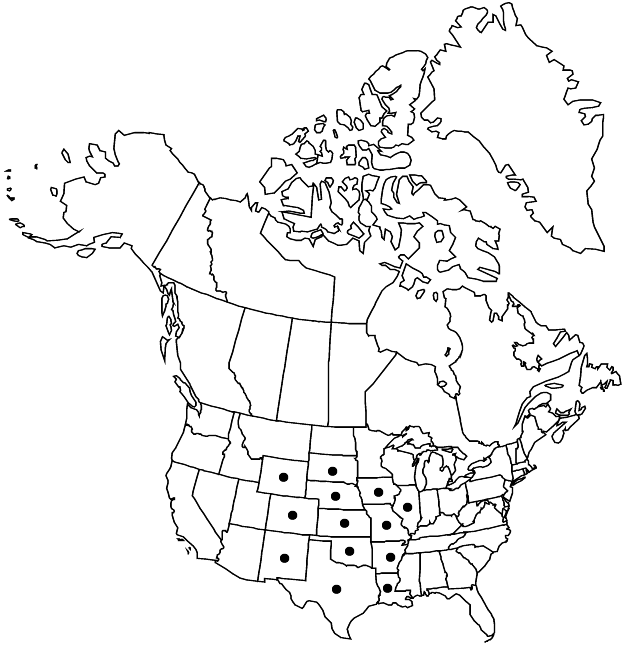Difference between revisions of "Persicaria bicornis"
Amer. Midl. Naturalist 3: 201. 1914.
FNA>Volume Importer |
imported>Volume Importer |
||
| (2 intermediate revisions by 2 users not shown) | |||
| Line 8: | Line 8: | ||
}} | }} | ||
|common_names=Pink smartweed | |common_names=Pink smartweed | ||
| + | |special_status={{Treatment/ID/Special_status | ||
| + | |code=E | ||
| + | |label=Endemic | ||
| + | }} | ||
|basionyms={{Treatment/ID/Basionym | |basionyms={{Treatment/ID/Basionym | ||
|name=Polygonum bicorne | |name=Polygonum bicorne | ||
| Line 60: | Line 64: | ||
|publication title=Amer. Midl. Naturalist | |publication title=Amer. Midl. Naturalist | ||
|publication year=1914 | |publication year=1914 | ||
| − | |special status= | + | |special status=Endemic |
| − | |source xml=https:// | + | |source xml=https://bitbucket.org/aafc-mbb/fna-data-curation/src/2e0870ddd59836b60bcf96646a41e87ea5a5943a/coarse_grained_fna_xml/V5/V5_1201.xml |
|subfamily=Polygonaceae subfam. Polygonoideae | |subfamily=Polygonaceae subfam. Polygonoideae | ||
|genus=Persicaria | |genus=Persicaria | ||
Latest revision as of 22:08, 5 November 2020
Plants annual, 2–18 dm; roots also rarely arising from basal nodes; rhizomes and stolons absent. Stems ascending to erect, rarely decumbent, branched, ribbed, glabrous or appressed-pubescent to spreading-pubescent distally, stipitate-glandular or, rarely, without stipitate-glands. Leaves: ocrea brownish, cylindric, 6–20 mm, chartaceous, base inflated, margins truncate, eciliate or ciliate with bristles to 1 mm, surface glabrous or scabrous proximally, eglandular; petiole 0.1–1.5(–2.3) cm, glabrous or appressed-pubescent; blade sometimes with dark triangular or lunate blotch adaxially, linear-lanceolate to ovate-lanceolate, 2.3–13(–18) × (0.4–)1–2.3 cm, base tapered to cuneate, margins antrorsely scabrous, apex acute to acuminate, faces glabrous or appressed-pubescent along midveins, glandular-punctate abaxially. Inflorescences terminal and axillary, erect, uninterrupted, 8–60 × 10–18 mm; peduncle 8–60(–70) mm, glabrous or pubescent, usually stipitate-glandular; ocreolae overlapping, margins eciliate or ciliate with bristles to 0.8 mm. Pedicels ascending, 1.5–5 mm. Flowers 2–11 per ocreate fascicle, heterostylous; perianth pink, glabrous, not glandular-punctate, accrescent; tepals 5, connate ca. 1/4–1/3 their length, obovate to elliptic, 3–4.6 mm, veins prominent, not anchor-shaped, margins entire, apex obtuse to rounded; stamens 6–8, included or exserted; anthers pink or red, elliptic; styles 2(–3), included or exserted, connate at bases. Achenes included or apex exserted, brownish black to black, discoid or, rarely, 3-gonous, 1 side usually slightly concave and other with central hump, (2–)2.2–2.9 × 2–2.8(–3) mm, shiny, smooth.
Phenology: Flowering Jun–Oct.
Habitat: Moist, disturbed places, permanent and ephemeral wetlands, ditches, cultivated fields, shorelines of ponds and reservoirs
Elevation: 50-1600 m
Distribution

Ark., Colo., Ill., Iowa, Kans., La., Mo., Nebr., N.Mex., Okla., S.Dak., Tex., Wyo.
Discussion
Persicaria bicornis is a characteristic smartweed of permanent and ephemeral wetlands and moist, disturbed sites in the Great Plains. It often has been included in P. pensylvanica but can be distinguished readily by its heterostylous flowers. The achenes, which usually bear an obscure or prominent hump in the center of one face, also are diagnostic. This hump often ruptures the side of the perianth on fruiting herbarium specimens. Persicaria bicornis also has leaf blades that are on average narrower than are those of P. pensylvanica, and populations exhibit less variation in perianth color. As in P. pensylvanica, flowers with three styles and trigonous achenes are produced very rarely.
Selected References
None.